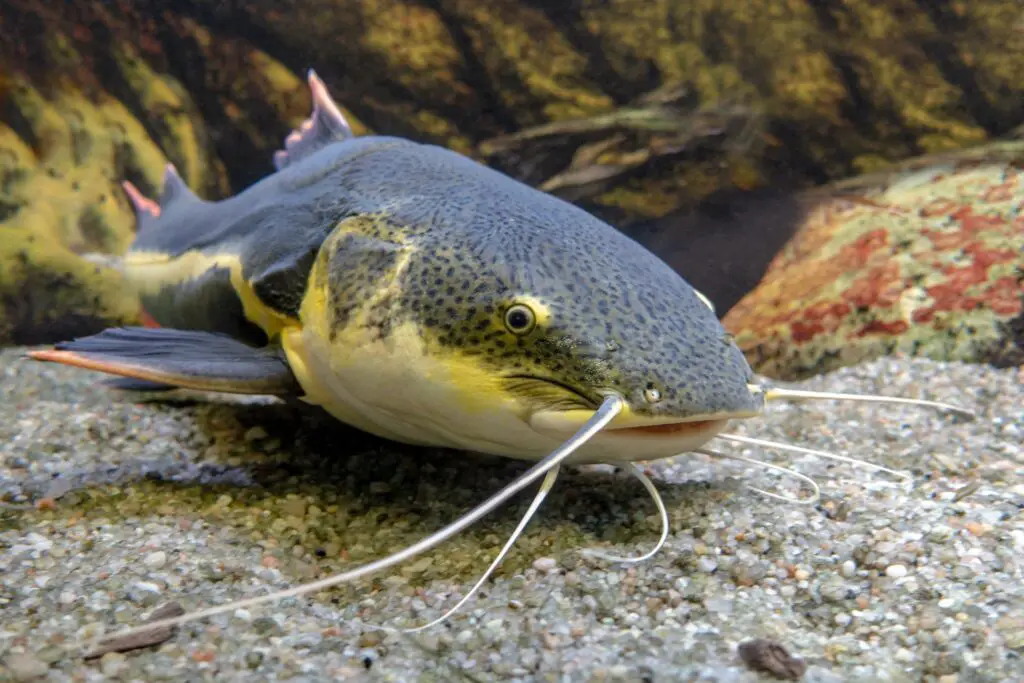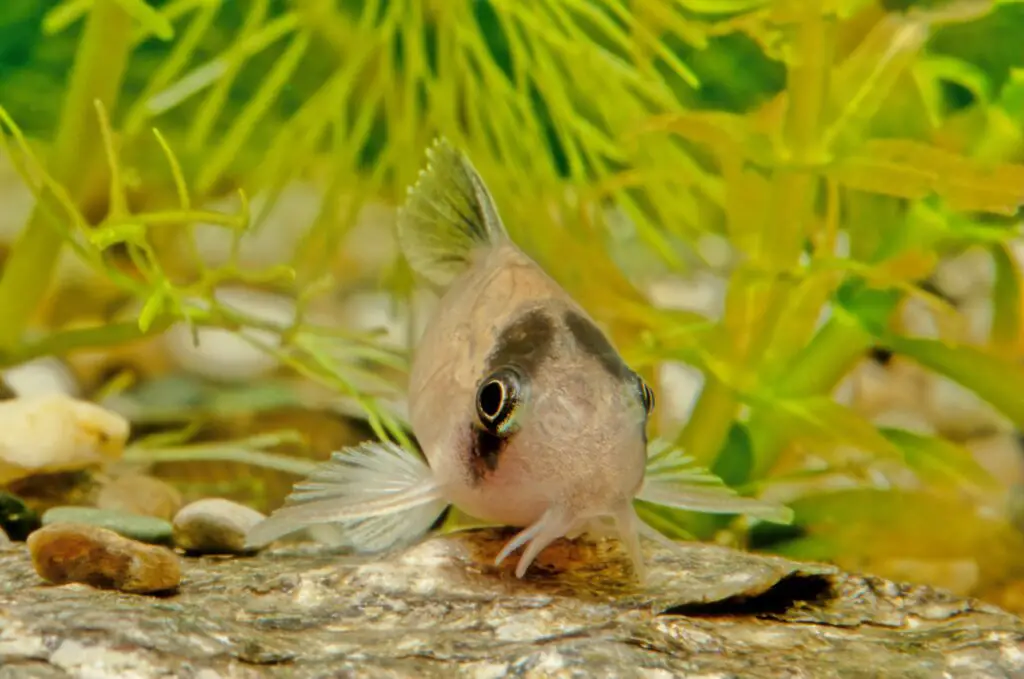There are more than 3000 different kinds of catfish are worldwide from 40 different scientific families. 1 in 20 vertebrates are a catfish. Channel catfish and blue catfish, both widespread in the wild and increasingly farmed, are the most popular species for human consumption in the United States. Whether a beginner or an experienced aquarist, a catfish can surprise you. In America, there are about 30 different kinds of catfish. This number will likely go up as more and more research is done on this topic. There are many kinds of catfish, and it can be difficult to discuss all the species.

Facts About Catfish
Get your catfish fix this summer with one of the newest additions to the seafood world, catfish. Catfish are fish often found in muddy waters and can grow to a size of up to 250 pounds. They can be eaten as is or cooked like other fish, but their unique flavor makes them popular. Catfish have the same shape and are most active at night, regardless of size. The catfish’s scaleless skin makes them unique. They have razor-spined fins, backs, and sides. Fish look like cats. Their barbels—whiskers—give them their name and distinguish them. Many catfish have eight mouth barbels and at least one pair. Most catfish can detect food in dirty water. Catfish range from 4–5 cm to 15 ft. Most of their colors are muted.
“Big Three” Species of Catfish
Most North American fishermen target “The Big Three.” Many states have these three catfish. These catfish are the easiest and most convenient to catch because of their location. We explore the big three and their locations here.
Blue Catfish
Blue catfish can be pale blue, dark blue, or almost black. Only Rio Grande blue catfish have dark spots. Most weigh 20–40 pounds. However, they can weigh up to 150 pounds. A straight anal fin and a two-forked tail are visible. Anal fins have 30–36 rays.
Big rivers have blue catfish in main channels and lesser branches. They live in sandy, gravelly, or rocky lakes, reservoirs, tributaries, and rivers. They go upstream in summer for cooler water and downstream in winter for warmer water. Blue catfish come from Ohio, Missouri, and Mississippi. They also live in Mexico, the southern US, and northern Guatemala. Blue catfish live 20–30 years. Blue catfish eat almost anything, including herring, frogs, crayfish, mussels, and fish. They will accept artificial bait, but most anglers prefer fresh, oily live or dead bait.
Channel catfish
Grey-to-olive channel catfish are unique catfish. They have dark patches, especially when young, unlike blue catfish silver-colored bellies. Channel catfish vary from flathead catfish in that their top jaws protrude. Their curved anal fin and deeply forked tail make them easy to spot. Anal fins have 24–29 rays. Males nest in the dark, hidden rock mounds or wood piles. Adult channels eat mussels, crabs, fish, plants, and bugs. Channel catfish search by smell at night in muddy water.
Channel catfish live in large rivers, lakes, and reservoirs. Blues prefer strong currents to channels. Like blues, channels are delicious fish. Only bass has more US fans. Channels make lakes, rivers, and reservoirs popular. Most catfish fishermen use pre-made baits like punch, drip, and soap. Worm, hot dogs, or crawfish fishing is another alternative. 10 million channel catfish anglers fish annually. Restaurants use the best-tasting channels.
Flathead catfish
Black, brown, and pale-yellow flathead catfish are common. They have Cream-colored bellies and 4 to 20 pounds, and 22 to 44 inches are common. They’re North America’s second-largest catfish. Flatheads have shorter, rounder anal fins and no forked tails. Their anal fin has under 30 rays. Flatheads are board- or shovel-shaped. Protruding lower jaw is called an underbite. Flatheads inhabit Mexico to the Great Lakes. Flatheads enjoy dark, deep, slow-moving creeks. Too many flatheads have grown invasive. Flesh-eating flatheads kill bottom-dwelling, open-water fish.
Common Species of Catfish
There are many different types of catfish, but the most common is the white catfish. These fish are found in fresh and saltwater in all sorts of habitats. They have a sleek look and are known for their quick movements.
White Catfish
White catfish inhabit the Atlantic coast from Florida to New York. They are very popular and tasty. White catfish have a round top and forked tail, unlike channel fish. Some adults weigh 10 pounds. White catfish eat fish, clams, crayfish, fruits, and berries.
White Wels catfish
Wels catfish are famous sportfish due to their size. Europe is the only location which has Wels catfish. They’re 16 feet (5 meters) and 660 pounds. These species are found In the Baltic, Black, and Caspian Seas. Wels catfish color changing fascinates everyone. In addition, their tapetum lucidum gives Wels catfish good night vision.
White-backed blackhead catfish
Most bullheads are black, brown, or yellow. Montana, Texas, Quebec, and Ontario have bullheads. Channel catfish waters attract bullheads most of the time. Clear-water bullheads are tasty. We can find most bullhead catfishes around 2-6 pounds on average.
Mekong catfish
The Mekong is a giant catfish. Habitat loss and overfishing make it highly endangered. Mekong giant catfish have no barbels or teeth. These fish have gray-to-white outlook without stripes. This toothless catfish eats zooplankton, algae, and larvae. Mekong giant catfish were the largest freshwater fish. Local fishermen caught a 646-pound (293 kilogram) the Mekong, which is a record in fish hunting! 330–440 lbs. Many projects have been established to save the Mekong enormous catfish.
Aquarium Catfish Species
Catfish are intriguing. Aquarists love catfish. Are you looking for something new to add to your aquarium? Check out aquarium catfish! These fish are low-maintenance and easy to care for, making them an excellent choice for anyone looking for an addition to their pet collection.
Blue shark tank
Blue Shark tank is a Catfish. Its tiny shark-like look gave it its name. Iridescents aren’t aquarium-friendly because they can’t grow to their normal size. Wild iridescent sharks are around 3 feet long. If space allows, iridescent sharks make terrific pets.
Pictus catfish
Aquarium pictus are very common aquarium fish. These fish live in the Orinoco and Amazon rivers. Their Barbels extend to 5 inches (0.12 meters). This fish has Gray-silver with black spots and lines. Pictus Catfish are great freshwater pets. They are Beautiful, low-maintenance, and quiet. Nighttime pictus catfish love to hide, and they are Shy but active. Pictus catfish feed quickly and weirdly.
Leaf-touching Otocinclus
Two-inch Otto cats (Otocinclus catfish)are Freshwater aquarium critters. Otto cats are delicate catfish species. They are mostly Algae eaters who “suck” windows. The most common Otocinclus is a South American otto cat. These fish are found in the Venezuela-Argentine north.
Raphael Catfish
Striped Raphaels live 12–20 years and are sound to humans. Aquarium owners like their chattiness. Raphaels with stripes are huge-headed black, and yellow are very common. These fishes have Flat-bellied arrows. Their home rivers are the Amazon, Orinoco, and Parnaba.
Bumblebee and dark catfish
Bumblebees, another little catfish, can grow to 3.5 inches (0.09 meters) and live for 5 years under optimal conditions. This tropical fish lives in fast-moving waterways in Venezuela, Colombia, Peru, the Amazon basin, and other South American countries. Bumblebees have yellow and black stripes. Aquarium owners like bumblebee fish for their bright stripes. Catfish like sinking tablets and food.
Chinese algae-eater
These species are used for Fishing for food and in aquariums. Chinese algae-eating catfish are mostly known as aquarium algae eaters. Lemon algae eaters and suckerfish are variants of Chinese algae eaters. They are mostly 1 inch long, and they survive up to 10 years. Southeast Asian freshwater fish are common in Asia. Aquarists enjoy suckerfish for their unique characteristics. They are golden with dark patterns and a dark body band.
Long-nosed Catfish
Aquarium fish like Otos devour algae. Bristlenose Plecos are quiet and low-maintenance. Bristlenose plecos are 5 inches longer than Otto cats. Bristlenose catfish are armored. Their wide head, flat body, and bony plates distinguish them. These fish are mostly White-dotted grey, brown, and green.
Cory Catfish
3″ pet cory catfish has a 20-year lifespan. Small fishless aquariums suit cory cats. Corys eat other small fish and plants. They are Omnivores. Most resemble three-striped cory catfish. Corys are “armored catfish” with sucker mouths and bone plates. Cory’s cats are amiable and simple to care for. These catfish are Shy in nature.

Pink-glass Catfish
Transparent glass catfish are unique species of catfish. They are also called Ghost or Phantom Catfish. Glass catfish show organs, bones, and other parts. Organs are located behind and around their skulls. Their sensitive barbels let most glass catfish detect electromagnetic radiation. These fishes are fascinating to look at.
Inverted Catfish
Inverted catfish are amusing. They are Upside downs swimmers. They swim upside down because they eat branches and log bottoms. These aquarium catfish can eat at the top. They are mostly 4 inches long and have light brown with black patterns.
Conclusion
In conclusion, there are over 3000 species, making them one of the world’s most diverse groups of fish. So don’t be afraid to try out some new fishing techniques and check out our list of typical catfish kinds for more information. Some catfish are more common, while others are less common. If you’re looking for more information on catfish, check out our other articles on them.












Pingback: What is a Red Tailed Catfish? | Reel Fishing Guru
Pingback: What is the South American Pimelodus? Unveiling the Mysteries of the Pimelodid Catfish | Reel Fishing Guru